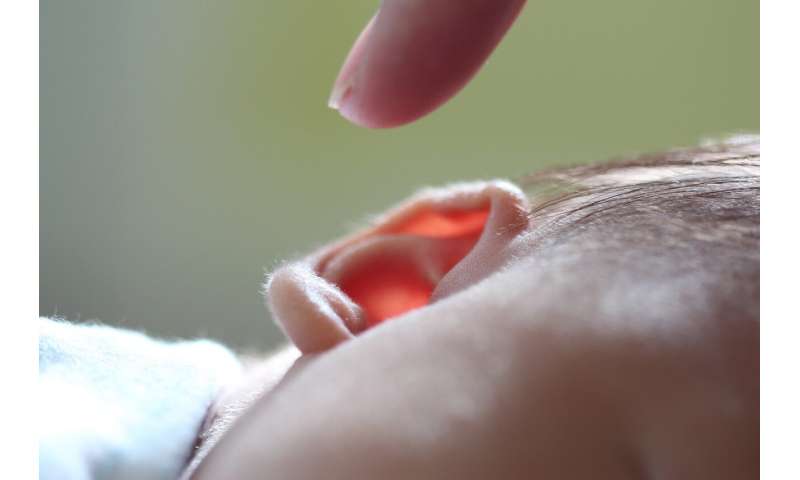
Psychologists at the University of Sheffield have found that deafness in infancy affects the development of their early communication skills, including non-verbal behaviors like pointing.
Researchers found that deaf infants born into hearing families tended to engage less often in communicative behaviors that predict language development compared to their typically-hearing peers.
They studied the infants’ use of five types of infant communication known to positively predict language development: show gestures, give gestures, index-finger pointing, communicative vocalization and word use.
The findings, published in the journal Pediatrics, suggest that access to sound is important not just for learning spoken language through imitation but for the non-linguistic use of sound that hearing parents intuitively rely on to regulate the back and forth of early interactions.
Dr. Danielle Matthews, from the University of Sheffield said: “On average deaf infants produced five fewer communicative behaviors in 25 minutes of play than their peers. While this may not seem like a big difference, each communicative act is a chance to learn something further and these chances add up over the weeks and months as a child develops. So it’s important to find ways to support interaction. Thankfully, whether babies are learning to speak or sign or both, there is a lot that can help.”
To support caregivers, nursery staff and health and social care workers, the researchers have created free online videos which offer information, advice and tips backed up by leading research to help support communication development at home.
The videos were created in collaboration with the National Deaf Children’s Society and City University London, and in consultation with teachers of the deaf, specialist speech and language therapists, and other researchers and professionals who work with families who have a deaf child.
Dr. Ciara Kelly, a Research Associate now based at the University of Manchester, said: “So much learning is happening in a baby’s first few months but for parents with no prior experience of deafness who have a deaf baby, this can be an emotional time, and a concern for many parents is how to best support their child. Videos with parents in real interactions, demonstrating communication strategies, can really help to make information and advice tangible. This is something parents and practitioners have raised the need for. So we aimed to create videos that can be used by parents and by professionals as a tool in their practice.”
University of Sheffield

